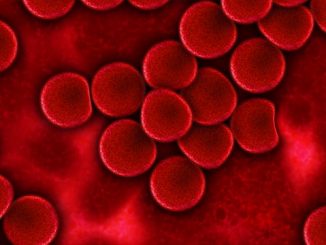
Last year, a ‘secret meeting‘ was held at Harvard Medical School. It was organized and led by George Church, a prominent geneticist at Harvard University and Jef Boeke of the NYU School of Medicine. The meeting was attended by a group of more than 130 scientists, engineers, ethicists, government representatives and industry leaders.
Entitled “HGP-Write: Testing Large Synthetic Genomes in Cells” (where HGP refers to the Human Genome Project, the world’s largest international biological research effort that resulted in the sequencing of the full human genome in April 2003), the primary purpose of the meeting was supposedly to challenge scientists to make the leap from simply ‘reading’ genomes (which is the objective of the original Human Genome Project) to ‘writing’ or building entire genomes by making them from individual DNA building blocks. In layman’s terms, that sure sounds like designing and creating a human being from scratch. But Dr. Church says otherwise. He says that the aim is simply to improve our capability of synthesizing longer strands of DNA for use in microorganisms, plants and animals.
Right now, scientists are already able to manipulate cell DNA-otherwise referred to as deoxyribonucleic acid. Some of the applications of such manipulation are potentially life-changing as well as life-saving, yet the moral and ethical issues associated with the technique are grave enough — eliciting threats about designer babies and enhanced superhumans. Currently, we can synthesise short strands of DNA, up to about 200 base pairs long.
HGP-Write intends to do much more than that. Even if Dr. Church is quick to point out that the project’s initial goal is merely to drive advancements in synthetic biology, questions and concerns on what it will eventually lead to can’t be helped. If gene-editing (think CRISPR) is already enough of a tool to create designer humans, then gene creation from scratch will make that even easier.
On the other hand, creating an entire human genome, which consists of around 3 billion base pair, might turn out to be unattainable. That said however, being able to synthesize longer strands of DNA may ultimately turn out to be useful rather than harmful. As Dr. Church said in a statement they previously issued: “Exponential improvements in genome engineering technologies and functional testing provide an opportunity to deepen the understanding of our genetic blueprint and use this knowledge to address many of the global problems facing humanity.”
The current process used to synthesize short DNA strands is slow and expensive. But it’s already enough of a start to revolutionize research, vaccine development, and treatment of the most notorious killer diseases. Just imagine what a more improved process can do.
As long as the goal is clear – eradication of diseases, better health for everyone and putting the technique to good use while following a set of ethical recommendations — maybe HGP-Write should be given the chance (and the funding) to do what it intends to do. No more ‘secret meetings’, though. We have enough problems to worry about. We don’t need more hypothetical ones to be concerned with.
References: Wired
- Bulenox: Get 45% to 91% OFF ... Use Discount Code: UNO
- Risk Our Money Not Yours | Get 50% to 90% OFF ... Use Discount Code: MMBVBKSM
Disclaimer: This page contains affiliate links. If you choose to make a purchase after clicking a link, we may receive a commission at no additional cost to you. Thank you for your support!




Leave a Reply